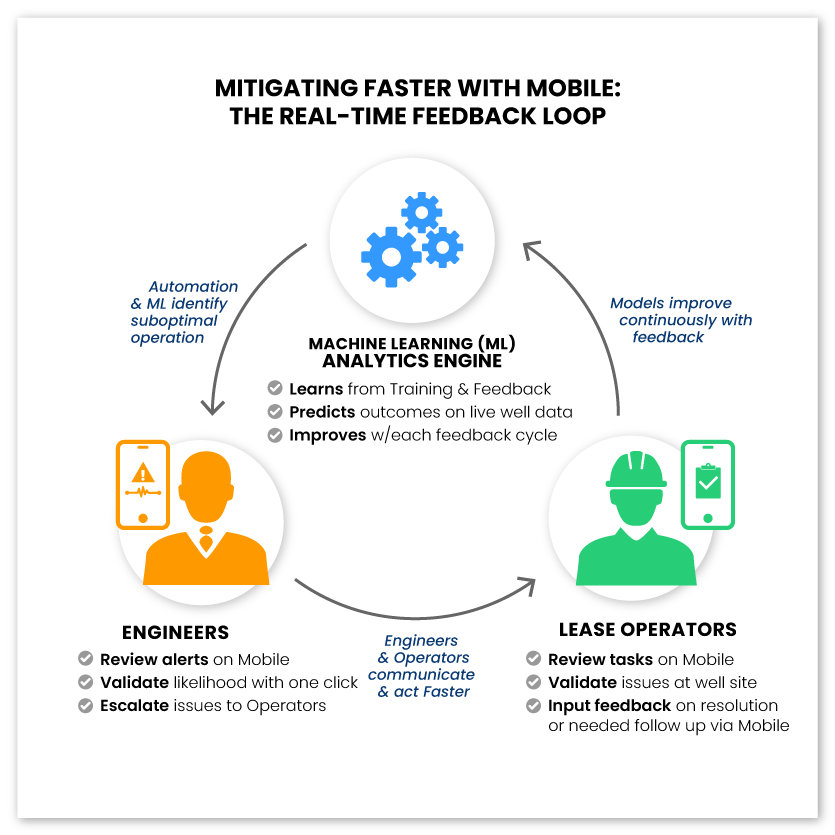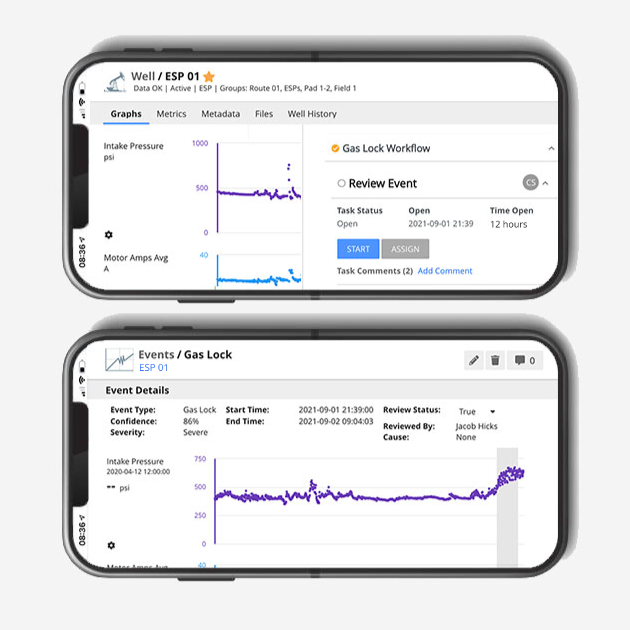Presented by:

This article appears in the E&P newsletter. Subscribe to the E&P newsletter here.
As more oil and gas producers embrace digital oilfield transformations, teams are becoming comfortable and skilled in using unified monitoring, data-driven analytics and automation in their daily engineering and surveillance work. These solutions cater to the engineer behind a desk, while mobile solutions for engineers and lease operators have been overlooked.
Easing communication, real-time notifications and well data collection is critical for preventive well maintenance and the fast diagnosis of issues. Mobile delivers these capabilities readily and helps producers profit from digital field investments for three key reasons.
1) Mobile removes the delays and errors of paper, spreadsheets, email and SMS
In its research, OspreyData have heard many producers identify that reporting and team communication still happens in paper logs, spreadsheets, email and text. Essential processes such as filing field ticket requests, communicating with operators and field data capture happen using this mix of methods, where valuable knowledge is at risk of being lost and hard to share across teams. Using paper often requires data to be entered twice which can cause delays and inaccuracies. Spreadsheets may not be stored in a cloud environment and are subject to data loss. Email and SMS are where many key conversations happen and valuable knowledge from problem-solving and resolution is often lost completely without ever being shared.
Mobile solutions naturally ease these pain points. With field data capture, accuracy levels improve as operators enter readings and comments without having to manage paper notes or repeat data entry back in the office. Conversations that were once stored in email threads can now be easily viewed on a well’s history page for entire teams to see. All of this rich data can power machine learning-based analytics that automate monitoring and event detection.
One of the strongest benefits of mobile lies in the camera. Teams can shoot and upload photos and videos from teardowns, workovers and assessments to a shared platform. This provides engineers rich visual details that replace costly site visits as they advise technicians on mitigation steps.
2) Mobile enhances operations with data-driven analytics
“The most compelling value mobile can deliver happens on the field level. Producers adopting advanced analytics practices that leverage machine learning will gain the best results by taking early action on the right alerts,” said Jeff Saponja, CEO of Oilify, co-inventor of the WhaleShark downhole gas separator and former senior engineer at Shell. Production engineers can review alerts generated from an analytics engine from any device as soon as they are received. If a site visit or deeper troubleshooting is needed, engineers can quickly generate a task for the field team to receive on mobile devices.
The Power of the Real-Time Feedback Loop

Having lease operators investigate problems and provide real-time feedback on a mobile device creates a powerful feedback loop that increases the accuracy of advanced analytics models over time. As they validate results, enter data and provide feedback in comments, they are seamlessly training advanced analytics models that run across entire fields.
Another high-value use case is well monitoring. Advanced analytics models can learn where a well’s trends should be, based on an engineer’s input along with details about its geology, design and life cycle. When operators take readings from the well site on a mobile device, the engine can compare actual values to ideal targets and show results within the platform.
A robust mobile product can intelligently provide mitigation steps that apply to the well issue at hand. The appropriate field procedure can be sent to an operator’s device as they arrive at the well site. Operators can provide feedback as to what actual steps were taken and train the machine learning engine with each completed task.
Enabling engineers and operators to provide prompt feedback via mobile keeps the analytics engine continuously trained and refined. This results in higher accuracy in identifications and predictions, which helps teams manage high volumes of wells by exception, keep uptime high and maximize production.
3) Mobile’s constant connectivity helps teams mitigate problems faster
Empowering teams with mobile solutions enables them to work anywhere and collaborate to solve problems without delay. Office staff can receive key alerts even when away from their desks and access all the information they need to make operating decisions. Offline mode enables lease operators to view key information even when in fields with low connectivity. Operators can enter data at the well site accurately and trust that it will be uploaded to the monitoring platform later.
Location-Based Notifications Reduce Windshield Time and Enable Fast Action
With the power of location-based services available on mobile, engineers and supervisors can know where lease operators are in the field and optimize tasks and routing accordingly. As manage by exception practices become more widely used, operators can spend less time and risk routinely driving a route and more time addressing problems that will increase uptime and production. These services can also help ensure safety—supervisors can see if operators haven’t moved for a long period and verify that they are not hurt or unconscious.
Seeing Effects of Mobile in the Permian

With the use of OspreyData’s mobile product that brings unified monitoring and AI-powered analytics to phones and tablets, a Permian Basin producer operating rod pump and ESP wells was able to prevent three workovers and save an estimated $60,000 within three months.
“Having this producer use our mobile app really helped machine learning analytics become a part of their team’s daily workflow,” said Jon Snyder, director of services at OspreyData. “Their production engineer built a habit of reviewing notifications on his phone, investigating the well’s trends and firing off tasks to his operators regularly. Operators valued having a tool to communicate with him, access well info and do data capture tasks when needed. The early notifications combined with quick troubleshooting ultimately prevented three workovers in one quarter.”
In the future of the digital oil field, mobile solutions will become an integral part of teams’ daily workflows: Engineers will leverage data-driven events and recommendations where they simply validate results and escalate problems, and operators can view recommended mitigation steps, complete data entry, and provide additional feedback. This faster process of problem investigation and mitigation can happen on the devices in our pockets today, delivering strong returns on digital field investments.
Recommended Reading
US Drillers Add Oil, Gas Rigs for First Time in Five Weeks
2024-04-19 - The oil and gas rig count, an early indicator of future output, rose by two to 619 in the week to April 19.
Strike Energy Updates 3D Seismic Acquisition in Perth Basin
2024-04-19 - Strike Energy completed its 3D seismic acquisition of Ocean Hill on schedule and under budget, the company said.
Santos’ Pikka Phase 1 in Alaska to Deliver First Oil by 2026
2024-04-18 - Australia's Santos expects first oil to flow from the 80,000 bbl/d Pikka Phase 1 project in Alaska by 2026, diversifying Santos' portfolio and reducing geographic concentration risk.
Iraq to Seek Bids for Oil, Gas Contracts April 27
2024-04-18 - Iraq will auction 30 new oil and gas projects in two licensing rounds distributed across the country.
Vår Energi Hits Oil with Ringhorne North
2024-04-17 - Vår Energi’s North Sea discovery de-risks drilling prospects in the area and could be tied back to Balder area infrastructure.



